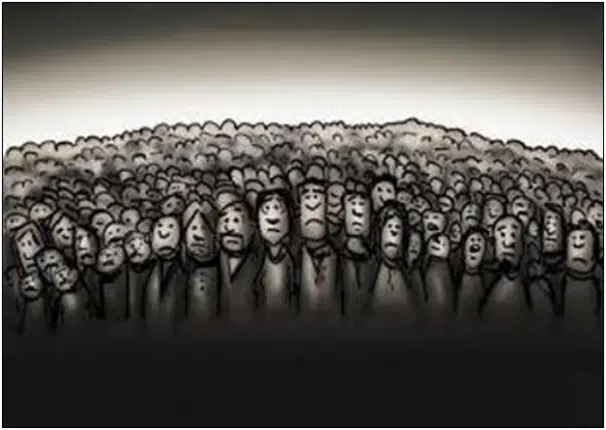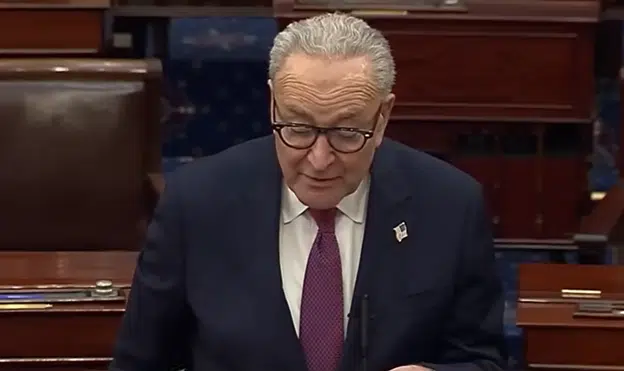By Rebekah Rast –
Remember the saying, just because everyone else is doing it doesn’t mean you have to do it, or the question, if all your friends were jumping off a cliff, would you do the same?
That question implies that being a follower is not always the best thing to be. It’s not only a good question to ask a friend, but the government as well. Even the President.
Putting America on a strict diet to only consume renewable energy in order to cut down on greenhouse gases is not a new trend. In fact, this diet Barack Obama fully supports has left some European countries sick and ailing.
European countries began government-sponsored renewable energy programs in the early to mid 2000’s; Obama began implementing similar ones in America when he took office in 2009. He was confident, and maybe still is, that countries like Spain, Germany and Italy had the right idea.
The economies of these countries are now in a very bad place because each of those governments pushed its involvement in renewable energies to the point of destroying job markets, small businesses, economies and citizens’ lives.
“We see time and time again that when the government gets involved in the free market, it does more harm than good,” says Bill Wilson, president of Americans for Limited Government (ALG). “We are seeing this play out in countries like Spain and now our government is jumping on board and leading America down the same path.”
A Wall Street Journal article taps into the reality of what Spain, Germany and Italy are dealing with after failed attempts by their governments to move these countries toward a dependence on renewable energy.
The article states that many European governments promoted generous subsidies to the renewable-energy market with the hope of meeting the European Union’s goal to have at least 20 percent of its energy come from forms of renewable energy before 2020.
That was before the financial crisis of 2008.
Now, as these European countries are facing tight budgets they are forced to scale back their levels of generous giving to the renewable energy sector. Energy consumers will now face higher energy costs without government subsidies.
The Institute for Energy Research (IER) has found that after the financial crisis of 2008, Germany faced a price mark-up of about 2.2 cents US per kWh because of the government’s unsustainable support for green electricity. In America, that increase would amount to an average increase of 19.4 percent in consumer’s electricity bills.
Not only has this turn of events had a negative impact on these country’s economies and energy consumers, but investors as well.
Spain’s push for photovoltaic power and its offering of generous subsidies encouraged many individuals and small businesses to invest in this form of renewable energy. The people who invested felt it was a good solid investment backed and guaranteed by the government.
Spain is now considering steep cuts to these subsidies due to budgetary constraints. These cuts could easily force a small company to close if it can longer afford to pay the bank loans back for its renewable energy investment.
Another report by IER describes how the Spanish government’s investment in green energy has hindered its ability to bounce back from the financial crisis. These were some of the key findings:
• For every 1 green job financed by Spanish taxpayers, 2.2 jobs were lost as an opportunity cost
• Since 2000, Spain has committed €571,138 ($753,778) per each “green job”
• Those programs resulted in the destruction of nearly 110,500 jobs.
“The cost of the government throwing all its weight behind a renewable energy program in Spain has not only lead to record deficit levels for the country but also contributed to huge job losses,” says Wilson.
To add fuel to the fire, a graph by the U.S. Energy Information Administration (EIA), shows an increase of carbon emissions of almost 50 percent since Spain started its push to renewable energy.
Spain has learned the hard way that the sun doesn’t always shine and the wind doesn’t always blow. For each form of renewable energy used, back up forms of conventional electricity are needed to fill in the gaps of unavailability.
The situation in Italy is not much better. The country requires utility companies to generate a certain amount of electricity from renewable energy sources. When the utility companies meet the requirements they are given “green certificates.” If a utility company does not meet its quota, it can buy a “green certificate” from another utility company. As sales of these “green certificates” increase they become more valuable.
Italy cannot keep up with the cost of the certificates, but realized if it were to pull the program, financing for any future green projects would be lost, devastating investors and utility companies. Italy is stuck finding another solution.
America hasn’t reached the tipping point where these other countries sit, but collapses in Obama’s green initiatives have already started.
As ALG previously reported, a program that had the full backing of the Administration has been drained of resources because it was labeled too risky. This program, Property Assessed Clean Energy (PACE), allowed homeowners to take out a lien on their property for the investment of energy-efficient home improvements, including insulation and solar panels.
The program started off well, especially in parts of California, until the Federal Housing Finance Agency (FHFA), which regulates Fannie Mae and Freddie Mac, decided homeowners’ taking out a lien loan on their homes was too risky as the country faces such an unstable housing market.
The other problem with the PACE program is the lien loans got paid off before the initial mortgage. Meaning, if for some reason a homeowner could no longer afford payments and the home went into foreclosure, the PACE loan would be the first to be paid off. Any extra money would then go to paying off the original mortgage held by a bank or quite possibly Fannie Mae or Freddie Mac.
Due to the abrupt ending of the PACE program in certain communities, many homes are left in limbo and many green companies are out of work due to the haste of the government pushing a program into a market that could not sustain it without risk.
When Congress allocated $3.2 billion to be spent on Obama’s green initiatives for job creation in February 2009, the government was hoping renewable forms of energy would find a successful niche in the marketplace. The New York Times reported that of that $3.2 billion only 8.4 percent has been spent on green job creation and only 2,300 jobs were produced or saved as a direct result of this spending. That should be proof enough that renewable forms of energy cannot compete with conventional forms — the faster the government realizes that truth, the better.
“The government needs to stop picking winners and losers,” says ALG’s Wilson. “If this Administration continues to throw money at green energy programs it will hurt businesses, the job market and the economy.”
As solar panels continue to grace America’s rooftops and wind farms continue to rise throughout America’s countryside, it is wise to look at the predecessors of green initiatives and to not dismiss the notion that America one day could be in a similar position.
Rebekah Rast is the national correspondent to Americans for Limited Government (ALG) News Bureau.






